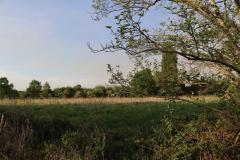
Cheshire East Council have announced they are ready for the winter weather and will be trialling a new type of gritting technique this year.
As an experiment, Cheshire East are going to use an alternative method this winter using salt mixed with brine to grit the main routes.
This new method of salting involves spreading dry salt and salt mixed with brine, which is mixed at the point of spreading to form a solution.
The use of this solution is understood to be advantageous because the salt becomes effective quickly after spreading; is less easily removed by passing vehicles or strong winds and lasts longer without retreatment.
Cheshire East Councillor Rod Menlove, Cabinet member with responsibility for environmental services, said: "There is a general understanding that the previous two winters have been particularly severe here in Cheshire East. The message this year is 'we're ready' – we have made many improvements to our winter service this year and hopefully trialling the 'pre-wet salt' will be successful.
"This Council will continue to identify methods which can make our winter highways service more effective.
"Of course, we cannot guarantee that all routes will remain completely ice-free during freezing weather. What we can do, is ensure that our salt stocks remain high, that our gritting vehicles are sent to the worst-affected areas and that we will do all we can to reduce the amount of ice and snow on the area's roads."
The authority has been training drivers, briefing teams and investing in a new fleet through its new highways service.
Gritting teams work around the clock in an effort to keep priority routes open to commuters and all gritting routes can be found on the Cheshire East Council website.
Photo: Cheshire East Councillor Rod Menlove (left), Cabinet member with responsibility for highways services and Cheshire East Council's Strategic Director for Places and Organisational Capacity, John Nicholson.








Comments
Here's what readers have had to say so far. Why not add your thoughts below.
The pavements are also very slippery with wet leaves and given the imminent freeze will be become treacherous with or without ' pre-wet salt' (isn't that 'dry' salt?)
If the council intend to 'continue to identify methods which can make our winter highways service more effective'... May I respectfully suggest a 'brush'?
Gritting and salting is an extremely sophisticated operation involving micro-weather forecasts and precise dosages of salt. Rock salt works by reducing the freezing point of water by making it into a saline solution. Part of the way that this works is by car tyres mixing the rock salt with the ice and snow and thus creating saline and thus melting the ice and snow. Making the rock salt slightly damp before you spread it brings a number of advantages. It's not dusty, it tends to stay where its put, is less prone to becoming stone chips on our windscreens and it has begun the process of becoming saline. Pre-wet salt has simply been dampened prior to spreading.